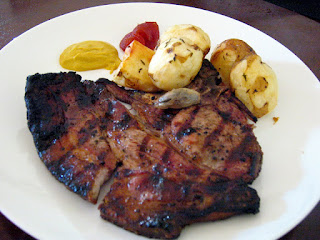
Urid Dal Curry
Get a pot of water on to the stove with a couple of cups of Urid Dal lentils, an onion cut in half and a couple of bay leaves (do not add any salt as this will toughen the lentils and inhibit their cooking). Bring the water to a boil then reduce the heat and simmer for about 30 minutes, or until the lentils are tender, but not mushy.
While the lentils are cooking get the rest of the curry ready. Toast in a dry frying pan some cinnamon, cloves, nigella (onion seeds), a dry chilli or two, fenugreek seeds, coriander seeds, and cumin seeds. When all the spices are fragrant and toasted transfer to a blender with some fresh chilli, garlic, grated ginger and an onion peeled and quartered. Pulse the blender to form a rough paste.
Fry the paste in a little oil until the onion has softened and it has started to caramelise, tip in the drained lentils and stir through, add a couple of chopped de-seeded tomatoes, half a cup of water, and half a cup of coconut milk, simmer until thick, season with salt. Stir through some chopped coriander and serve with bread or rice, or both.
Flat Bread
I just use my basic bread dough, find the recipe here, and follow the pita bread instructions at the bottom of the post.
Onion Bhaji
Peel and slice a couple of onions in half and then in to thinnish slices, place in a bowl and cover with milk, let the onion slices soak for about half an hour.
Drain the onions. I cheat here and use a pre-made masala mix, but you could make your own, add a generous spoon of the masala to the onions and enough chickpea flour (gram flour) to coat the onions, you may need to add a little water to form a batter, but there should be enough liquid left on the onions.
In a heavy based pan add about a centimetre of neutral flavoured oil (I use grape seed oil), when the oil is up to temperature (you can test with a cube of bread) add a spoonful of the onion mixture to the oil and fry for about 2 minutes per side, take care when turning the bhaji not to splash yourself with oil.






























